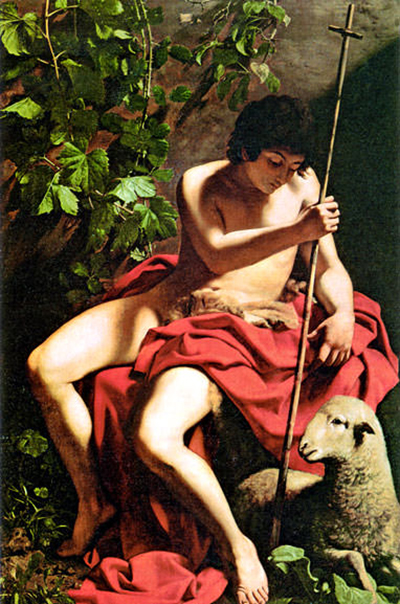Contrary to the earlier perception that this photo was painted by Bartolomeo Cavarozzi, a Viterbese painter who lived in Spain between 1617-c and 1619, it has recently been attributed to Caravaggio by a number of scholars.
According to Perez, although Cavarozzi’s style clearly depicts characteristics in the youthful figure of St. John the Baptist 1598, the remaining part of the painting is devoid of these traits.
Instead, it shows specific attractions with certain passages of very high quality that are associated with Caravaggio, such as the aesthetically projected vine leaves which give strong recollections of the Ambrosiana Basket of Fruit.
Additionally, the gentle chiaroscuro, the contours and the faint usage of features closely resemble the early works by Caravaggio.
The strong Spanish provenance on these works, as well as the dates engraved on aesthetic foundations, may lead to speculation as to whether this, indeed, was not similar to that picture, which Mancini asserts that was made for Hospital of the Consolazione for the Prior, where Caravaggio was receiving treatment either at the beginning or mid-1590s.
He notes that Caravaggio soon became sick with a an acute disease and due to lack of money; he had no choice but seek treatment at the Hospital of the Consolazione. As he nursed his ailment, he painted many pictures for the Prior who carried them to his native homeland of Seville.
Confusion, however, arises due to the variation in the manuscripts. While one of Mancini’s Considerazioni sulla pittura reads Cicilia (Sicily), the other one reads Siviglia (Seville).
Luigi Salerno (1955) further demonstrated the existence of Camillo Contreras; a Spanish prior of the hospital in 1593, and that he might have retained the prior status until 1595, the time when a new prior is mentioned in the document. Evidence by Frommel only casts doubt but does not invalidate Salerno’s findings.
Painters like the young Diego Velaznquez may have been impacted by the presence of Caravaggio’s paintings in Seville, and went on to paint the bodegones during the end of the second decade part of the seventeenth century. In its broader picture, the bodegones is now beginning to be associated with still-lifes.
It also includes genre scenes comprising still-lifes. Velazquez’s paintings were, however, mostly spiritual scenes that depicted characteristics of the still-life through genre idioms.




